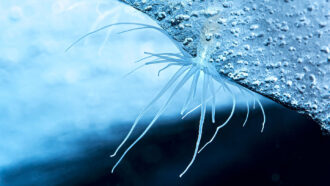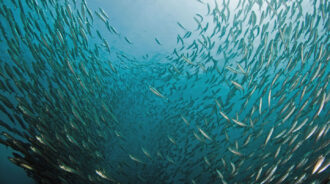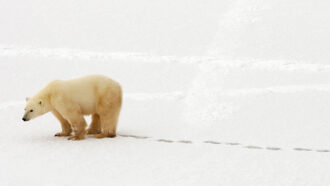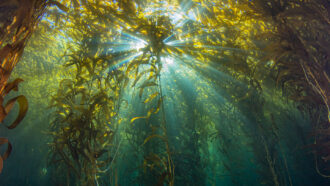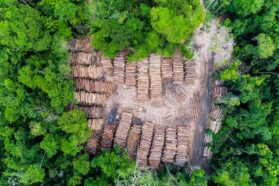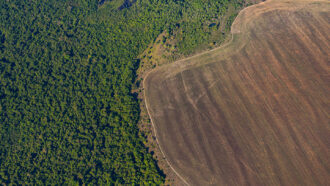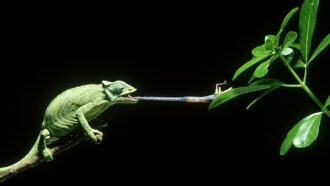Bird poop helps keep coral reefs healthy, but rats are interfering
Nitrogen from bird guano makes for more productive reef ecosystems
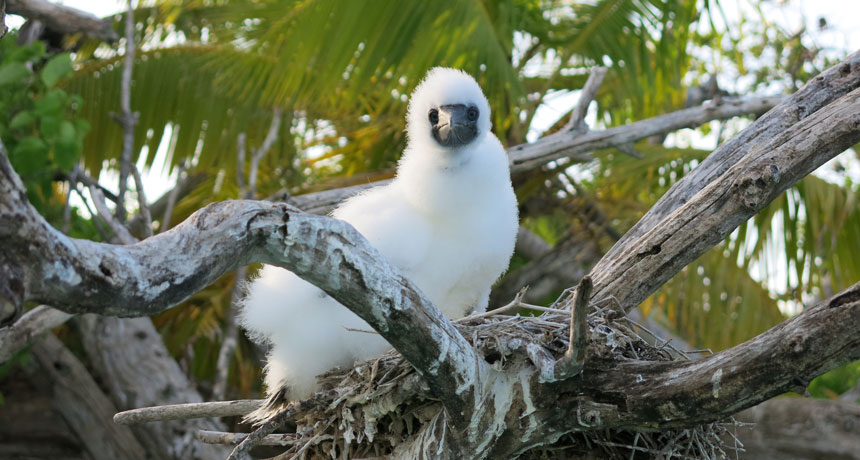
The poop of seabirds, such as this red-footed booby chick, contains nitrogen that leaches into coral ecosystems. That nitrogen helps the reefs stay robust.
N. Graham
When invasive rats eat island seabirds, nearby coral reefs can suffer.
Researchers studied islands with and without the rodents in the Chagos Archipelago. It’s an island group in the middle of the Indian Ocean. On rat-free isles, the team found an average of 1,243 birds per hectare (2.5 acres). On rat-infested islands, they found only about two birds per hectare. What’s more, rat-free areas had healthier coral reef ecosystems.
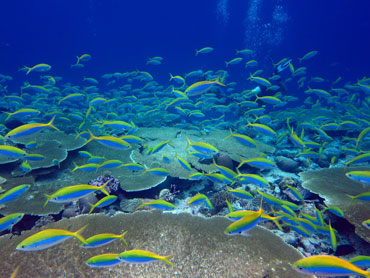
The reason: Bird poop.
Feces are naturally rich in nitrogen, a key nutrient. Rain washes the poop’s nitrogen into the ocean. This helps keep reefs productive. The scientists described their findings in the July 12 Nature.
“We’re essentially linking three ecosystems in this study,” explains Nick Graham. Rats affect the seabirds, which affect the reefs, notes this coauthor of the new study. An ecologist, Graham works at Lancaster University in England. Feces are naturally rich in nitrogen, a key nutrient. Rain washes the poop’s nitrogen into the ocean. This helps keep reefs productive. The scientists described their findings in the July 12 Nature.
People introduced rats to the Chagos Archipelago in the late 1700s. Since then, these rodents have taken over ecosystems, devastating populations of native seabirds. These birds have included red-footed boobies and terns.
Rats eat seabird eggs, chicks — even the brains of adult birds, says Holly Jones. She’s a restoration ecologist who was not involved in the study. Rats are a major problem, says Jones, who works at Northern Illinois University in DeKalb. Why? Seabirds are “ecosystem engineers.” They help to keep the ecosystem in balance. When they’re gone, the environment on land and in the water changes dramatically.
Story continues below graph.
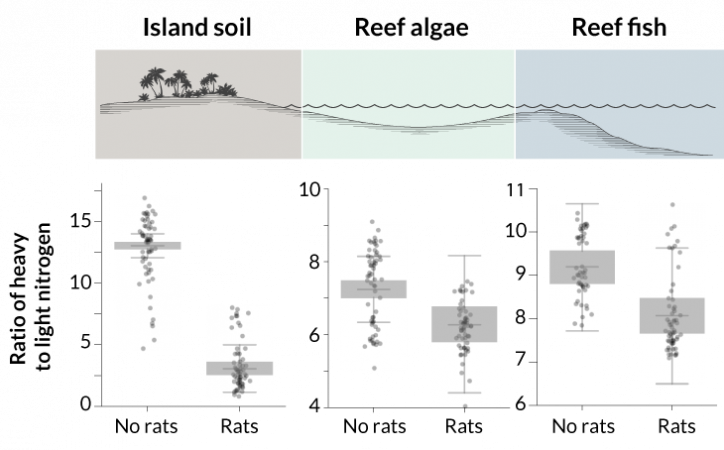
Looking for signs of poop
Bird poop, or guano, is rich in certain heavy isotopes of nitrogen. (Isotopes are different forms of an element that all have the same amount of protons but different numbers of neutrons.) Heavy nitrogen comes from the birds’ diet. Its presence points to there being bird poop — and thus birds — in an area. Graham and his colleagues tested for these isotopes on 12 islands. Six were infested with rats, the rest had no rats. The researchers also tested nearby coral reefs.
Compared with rat-infested islands, the team found much more heavy nitrogen in the soil of rat-free islands. These were sites where bird populations still thrived. The researchers also found heavy nitrogen in the algae, sponges and fish at reefs surrounding those islands. Rains and lapping waves are known to leach bird guano into the sea. However, that guano’s effects on reefs had been unclear.
Because nitrogen can act as a fertilizer for ocean plants and algae, the researchers now suspect this boosts the health of reefs around rat-free islands. More algae grow. That leads to more fish grazing on the reefs. Those fish also help clear out dead corals. These are all essential processes in a healthy reef. The fish living near reefs with more nitrogen also grew larger and faster, the scientists show.
In addition to these indirect effects on reefs, nitrogen may also directly help the corals, says David Gillikin, who was not involved in the study. He’s a biogeochemist at Union College in Schenectady, N.Y. Between 15 and 50 percent of nitrogen found in corals comes directly from seabird guano, he says.
Eradicating invasive species, such as rats, from the islands will help preserve reefs, Graham says. Rat extermination has been done on 580 islands worldwide. It can be difficult to get rid of every rat on an island. So far, the success rate has been about 85 percent.
Still, many reefs have been in trouble for decades and face other threats, too. These include coral bleaching and ocean acidification. Climate change has been driving both impacts. The UNESCO World Heritage Centre estimates that large coral reefs could be gone by the end of this century. “We’re constantly looking for solutions for the coral reef crisis,” Graham says.
Protecting seabirds to save coral reefs is one solution that doesn’t stink.

